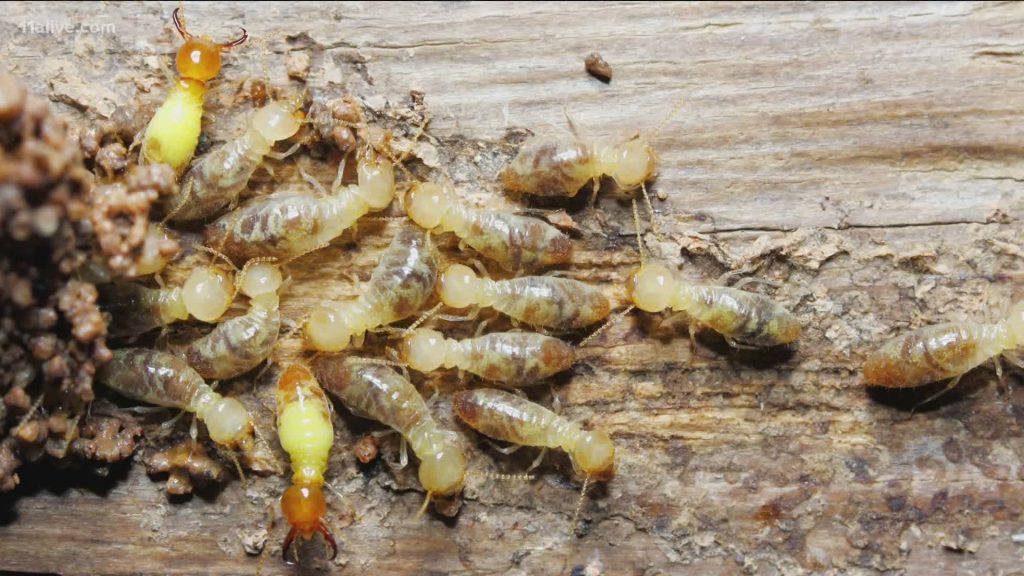Termites can be a homeowner’s worst nightmare, and with good reason. Termites can cause extensive damage to wood structures and can quickly create costly repairs. Identifying and dealing with termites on wood is essential for any homeowner. This article will provide an overview of the steps needed to identify, treat, and prevent termites on wood.
What are Termites?
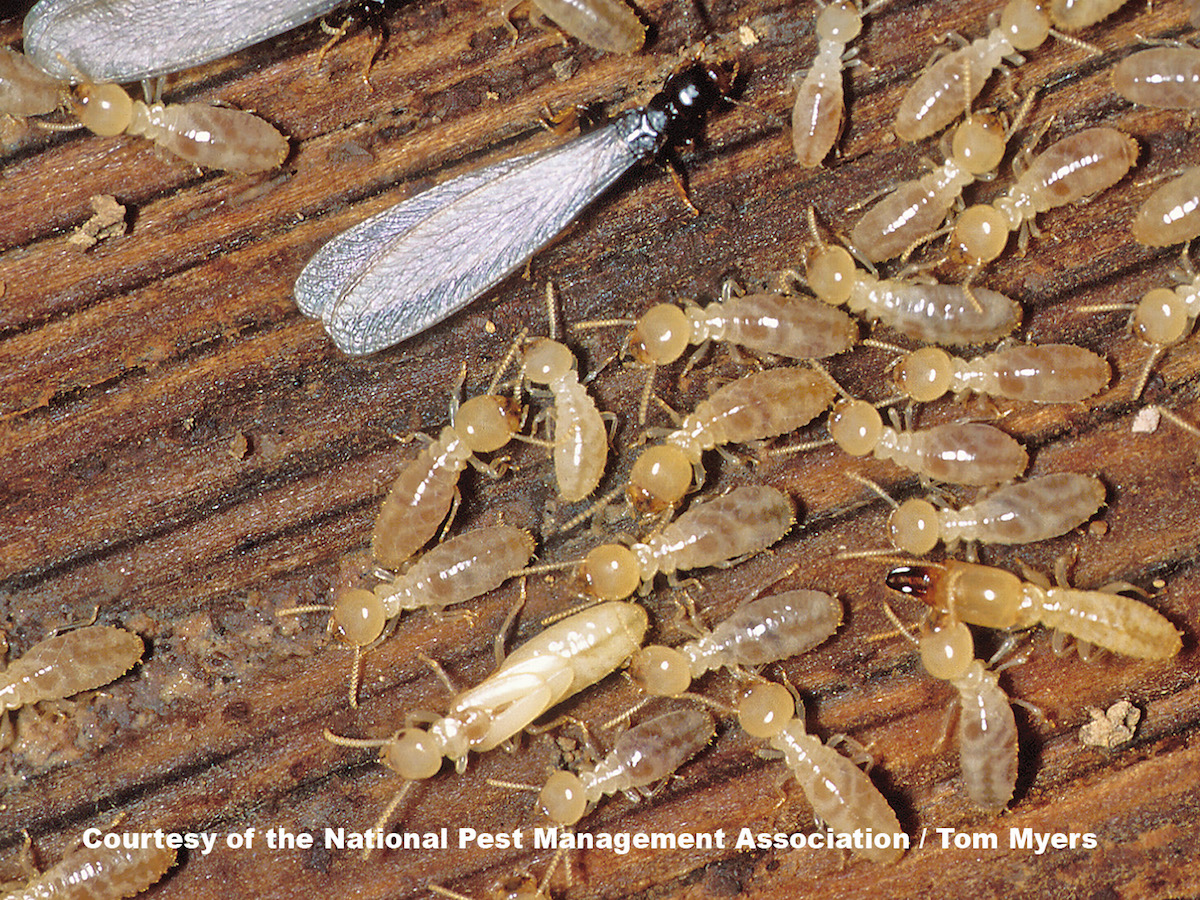
Termites are small insects that feed on wood and other plant material. They are pale-colored, soft-bodied, and have long antennae and six legs. They live and feed in colonies, which can contain thousands of individual termites. Termites are important decomposers in nature, breaking down dead wood and other organic material. In homes and other buildings, however, termites can cause significant damage to wooden structures.
Types of Termites
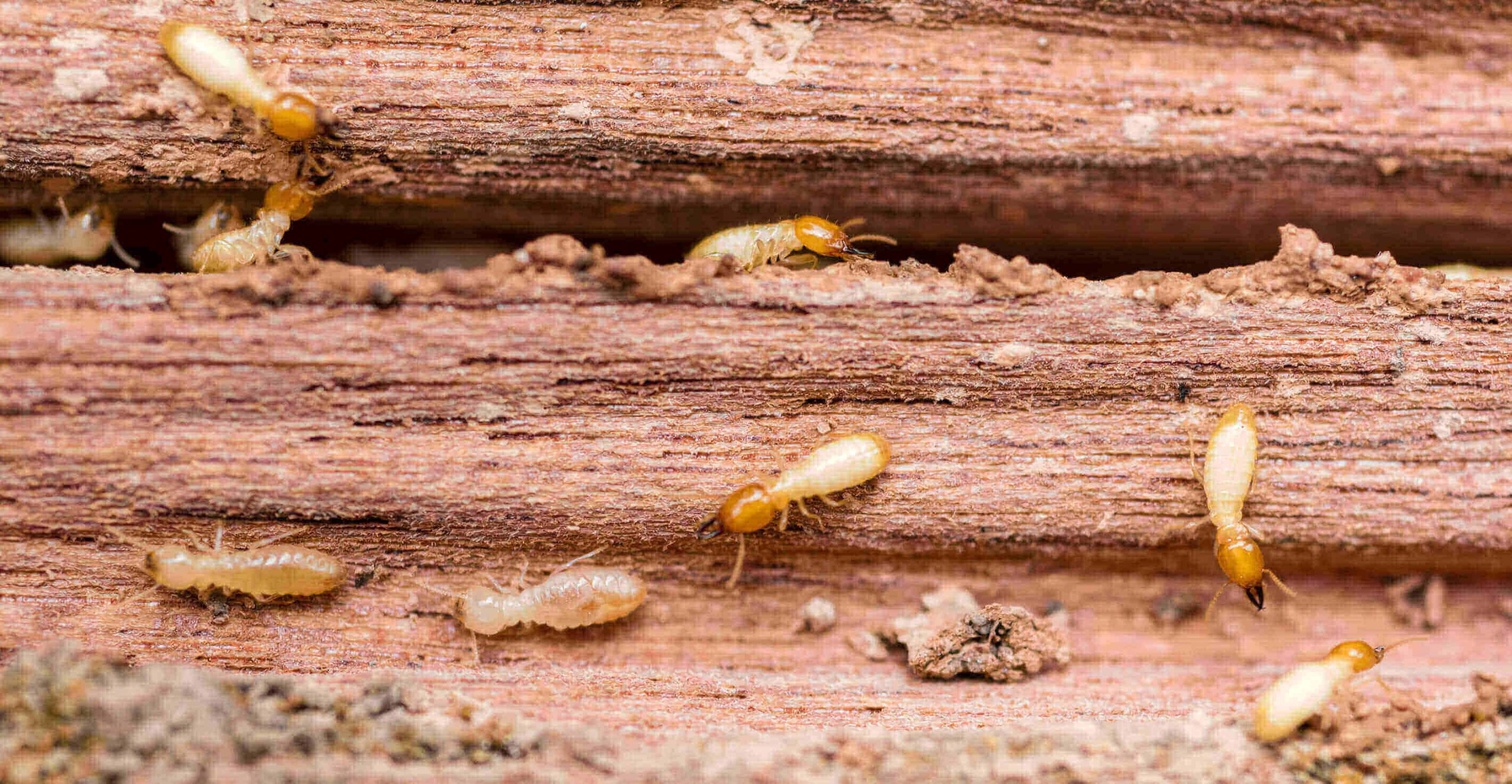
Termites are among the most destructive pests of wooden structures and infestations can cause significant damage if left unchecked. There are several different types of termites found in the United States, each of which can cause different levels of damage to wood.
| Type | Damage |
|---|---|
| Subterranean Termites | Significant damage to wood |
| Drywood Termites | Localized damage to wood |
| Formosan Termites | Significant damage to wood |
| Dampwood Termites | Localized damage to wood |
Subterranean termites are the most common type in the US, and they can cause significant damage to wood. Drywood termites are localized to certain regions and cause localized damage. Formosan termites, which are more common in the southern US, can cause significant damage to wood. Dampwood termites are also localized to certain regions and cause localized damage to wood.
Signs of a Termite Infestation
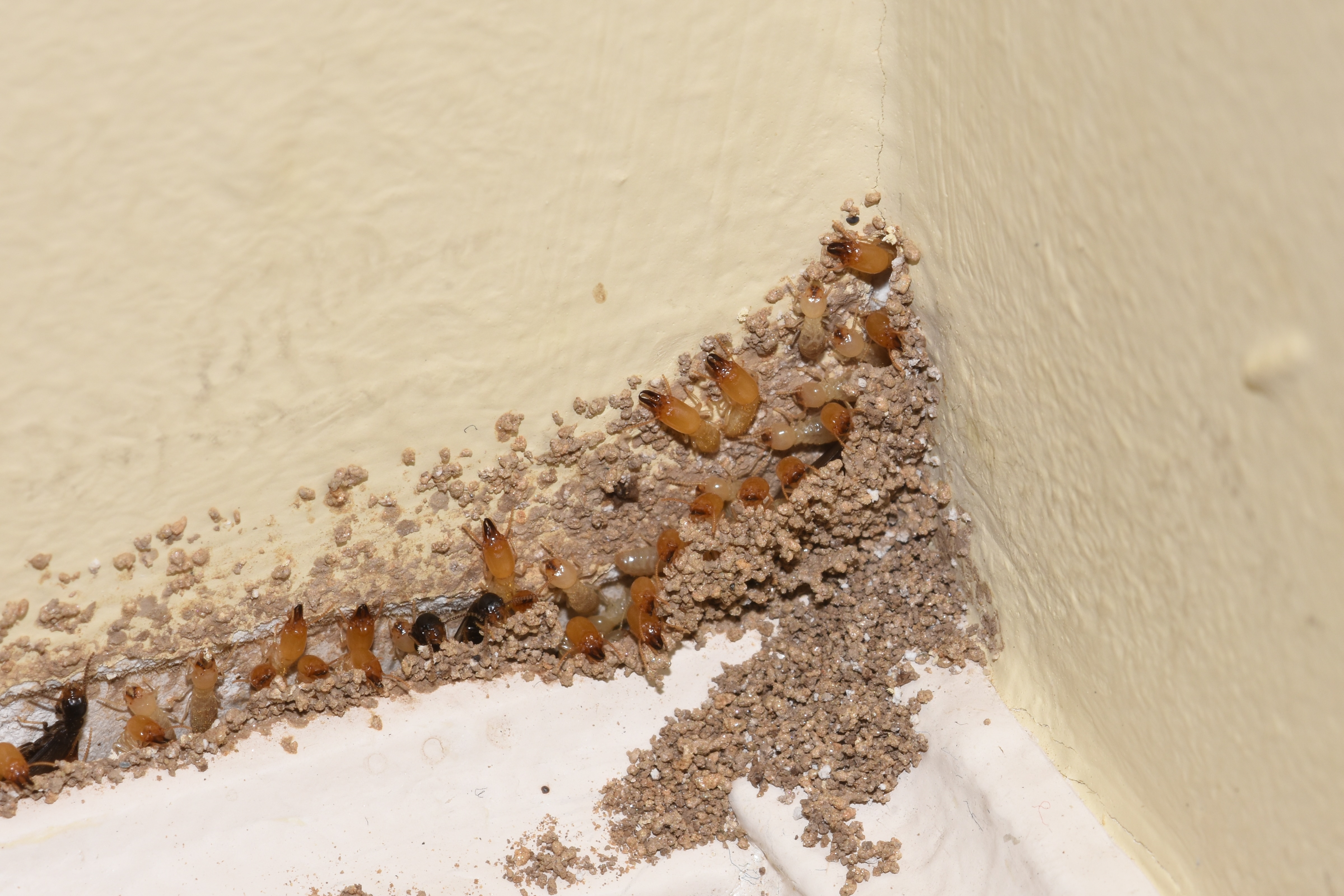
- Mud tubes on walls, floors, or foundations
- Swarmers (winged termites) in or around your house
- Damaged or hollow-sounding wood
- Discarded wings from swarmers
- Small piles of sawdust near wood structures
- Cracked or bubbling paint or frass (termite droppings)
How Termites Infest Wood
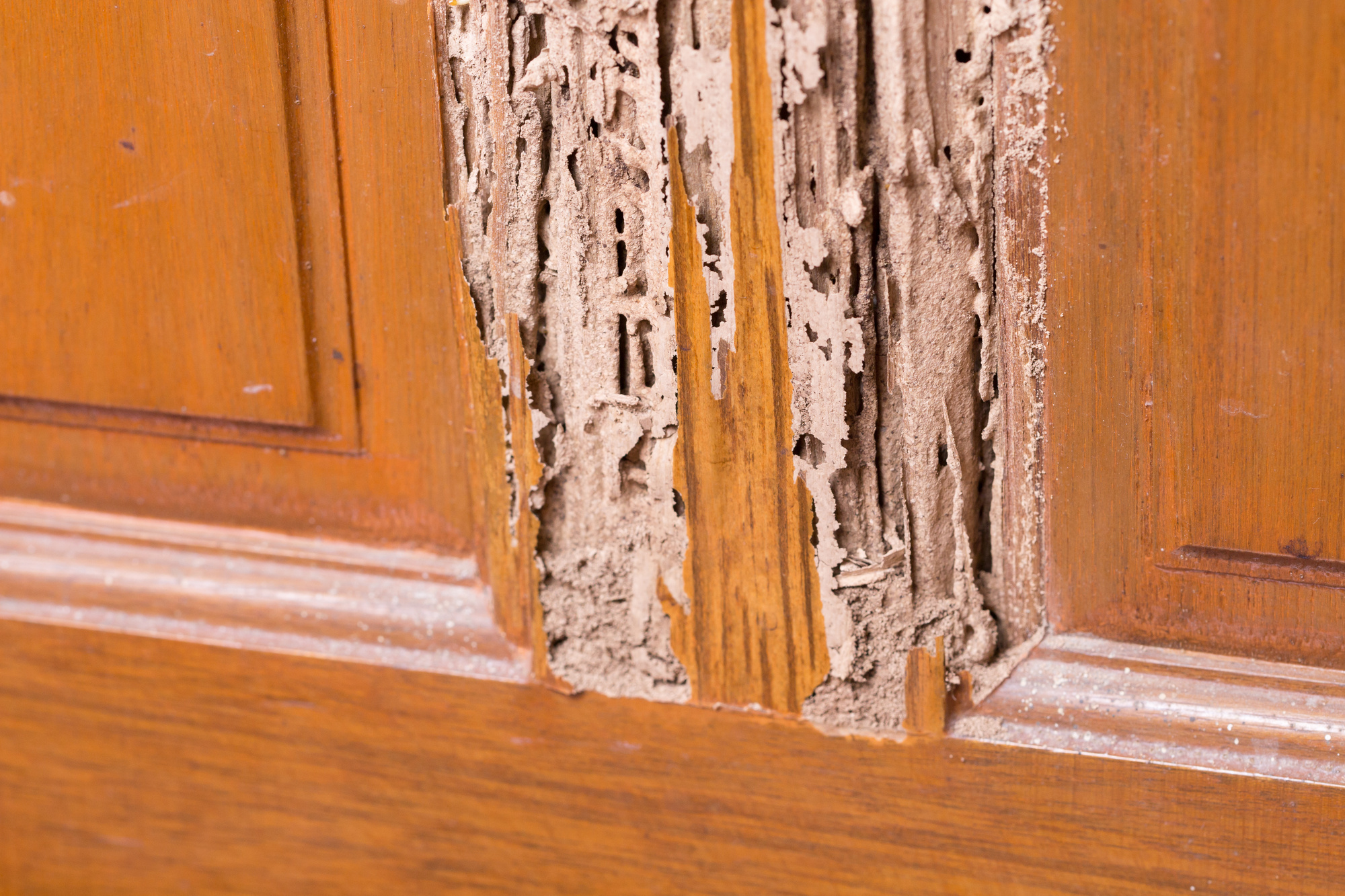
Termites enter wood through small cracks, crevices, and other openings. Once inside, termites build mud tubes to access the wood and protect themselves from other insects and the environment. These tubes are made of soil, wood, and other debris and usually lead from the ground to the wood. Inside the wood, termites create galleries, or tunnels, by eating away at the wood’s cellulose material. As termites consume the wood, they move from one area to another, leaving behind hollowed-out galleries and tunnels. Eventually, the wood’s structural integrity is compromised, leading to significant damage.
Preventing a Termite Infestation
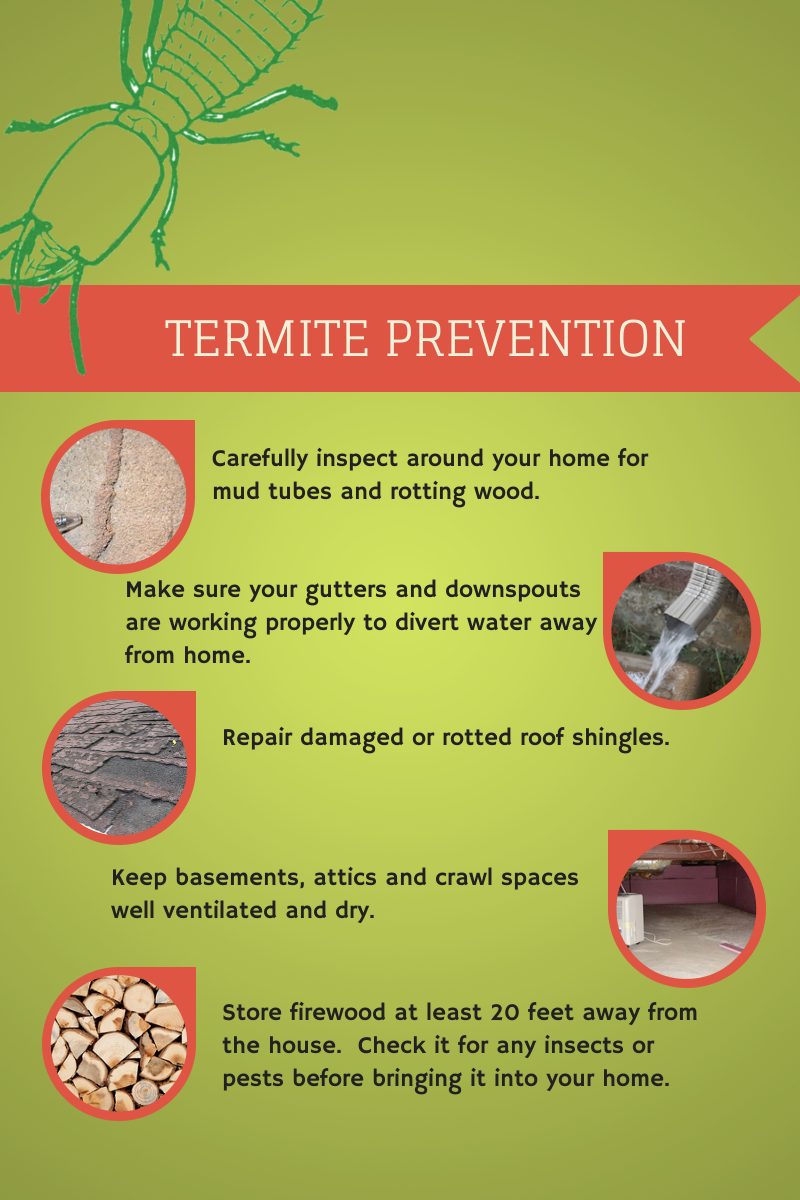
- Inspect your home and property regularly for signs of termites.
- Keep wood and other cellulose-based materials away from the foundation of your home.
- Remove stumps, dead trees, and other wood debris from your property.
- Eliminate moisture problems in and around your home, such as roof and plumbing leaks.
- Keep gutters, downspouts and drains clean and free of debris.
- Seal any cracks or other openings in your foundation to prevent termites from entering the home.
- Replace any wood that has been damaged by termites.
- Maintain landscaping so that it slopes away from the foundation of your home.
- Treat wood with an insecticide to prevent termites from infesting it.
Treating an Existing Termite Problem
- Inspect the property for signs of termites, including mud tunnels, wood damage, and discarded wings.
- Identify the type of termite to ensure the most effective treatment.
- Discuss treatment options with a local pest control professional.
- Apply a termiticide to the affected area.
- Bait systems to monitor termite activity and to provide long-term control.
- Create a pest-proof barrier between the soil and the wood to prevent termite access.
- Remove any wood that is infested with termites.
- Monitor the area regularly to ensure termites have not returned.
How to Repair Termites Damage
Termites can cause serious damage to wood, so you must repair any damage quickly. First, you must remove all termite-damaged wood. This can be done by scraping away the surface of the wood with a paint scraper or wire brush. You can also use a vacuum with a crevice tool to remove any termite droppings or debris.
Once you have removed the damaged wood, you must replace it. You can cut a new piece of wood to replace the damaged section, or you can use a wood filler to fill in the area. If you choose to use wood filler, make sure it is compatible with the type of wood you are repairing, as some types of wood filler are not suitable for certain types of wood.
Once the wood filler has been applied and dried, you can sand the area to make it smooth. You can then apply wood sealant to protect the wood and prevent further damage.
Once the sealant has dried, you can paint or stain the wood to match the rest of the woodwork. If you are painting the wood, make sure to use a good quality primer before applying the paint.
Finally, you should inspect the area regularly for signs of new termite activity. If you notice any signs of new damage, you must repeat these steps in order to repair the damage.
Frequently Asked Questions
What are the signs of termites on wood?
Termites on wood can be identified by the presence of mud tubes, swarms of winged termites, wood that sounds hollow when tapped, and wood that is cracked or visibly damaged. In some cases, termite droppings, known as frass, can be seen, which are similar to sawdust. In addition, a musty smell may indicate the presence of termites.
How can I tell the difference between wood with termites and wood without?
Termites can cause serious damage to wood, which makes it essential to identify whether wood is infested with termites or not. To tell the difference between wood with termites and wood without, look for signs of damage such as hollowed out sections, gouges, holes, and sawdust-like powder near the wood. Discoloration, blistering, and sagging of wood are also common indicators of termite damage. If you suspect your wood has been infested, contact a pest control expert for further inspection.
What are some of the best ways to deal with termites on wood?
The best way to get rid of termites on wood is to use a combination of chemical treatments and physical removal methods. Chemical treatments such as liquid termiticides, baiting systems, and dusts can be used to both kill and repel termites from the wood. Physical removal methods such as scraping or sanding away affected wood can also help to eliminate termites. Additionally, treating the wood with borate-based products can help to prevent future infestations. Finally, keeping wood away from moist areas can also help to prevent termite infestations.
How can I prevent termites from infesting my wood?
To prevent termites from infesting wood, use pressure-treated wood for any outdoor projects, such as decks, fences, and other wood structures. Remove any decaying wood from your property. Ensure that there is no access to soil from the wood, as termites need access to soil to survive. Keep wood debris away from the foundation of the house. Inspect your property regularly for any signs of termite activity. Seal any cracks in the foundation of the house to prevent termites from entering. Repair any leaking pipes or fixtures near the wood.
Is it Possible to Treat Wood with Termites Without Causing Damage?
Yes, it is possible to treat wood with termites without causing damage. Wood can be treated with Termites to perform a variety of wood repairs, such as strengthening weakened wood fibers or filling gaps in wood. While termites are typically known for causing damage to wood, when applied by a professional, they can be beneficial. Professional termite treatments are safe and effective, and they can help restore the integrity of damaged wood.
Conclusion
Termites can be a serious problem in homes and businesses, but with the proper identification and treatment, they can be eliminated quickly and easily. If you suspect you may have a termite problem, it is important to act quickly and contact a professional exterminator. An exterminator will be able to properly identify the species, determine the extent of the infestation, and provide the best treatment for the situation. Additionally, homeowners can take steps to prevent termites in the future by reducing outdoor moisture, eliminating wood-to-ground contact, and regularly inspecting their property for signs of an infestation.

